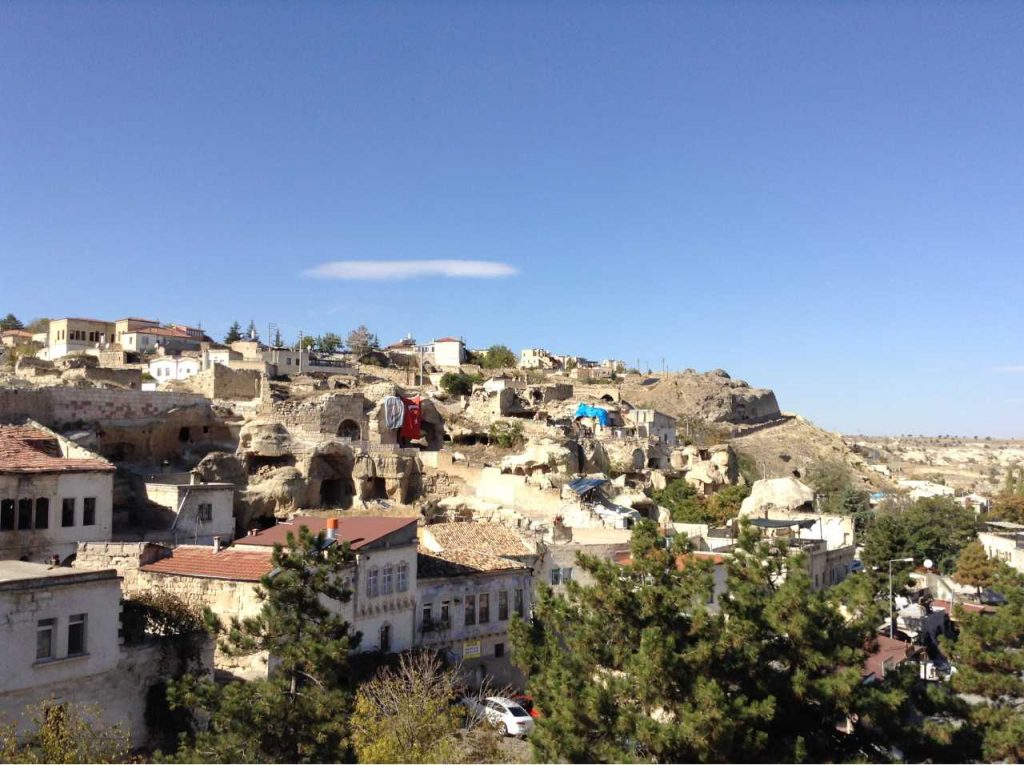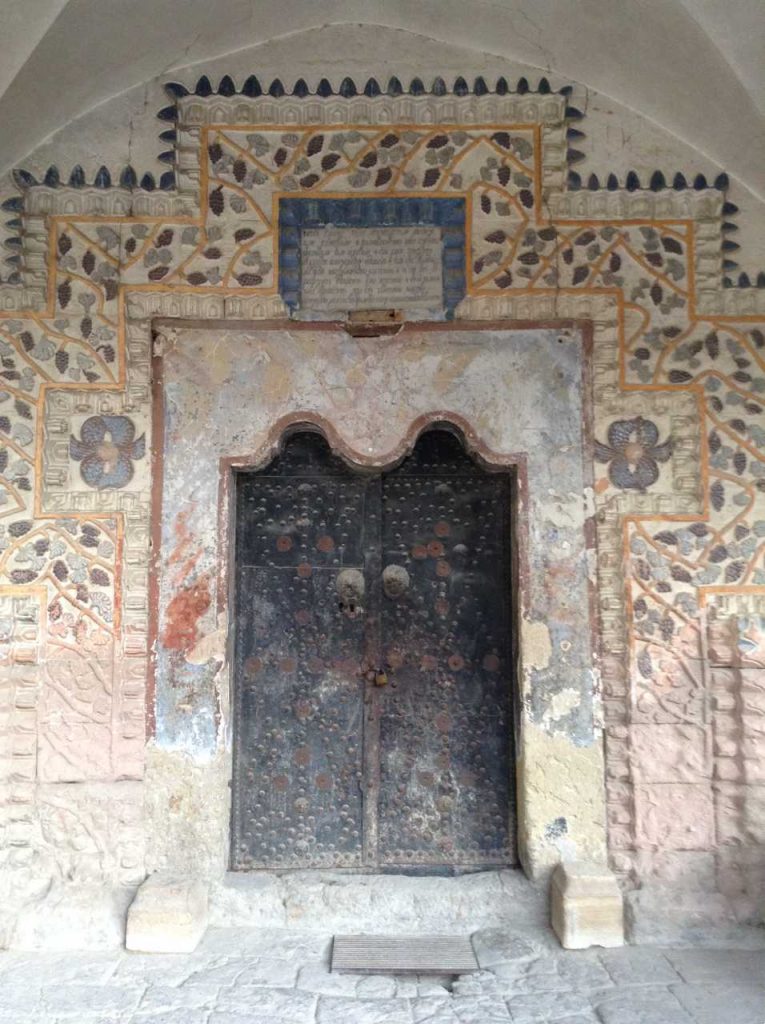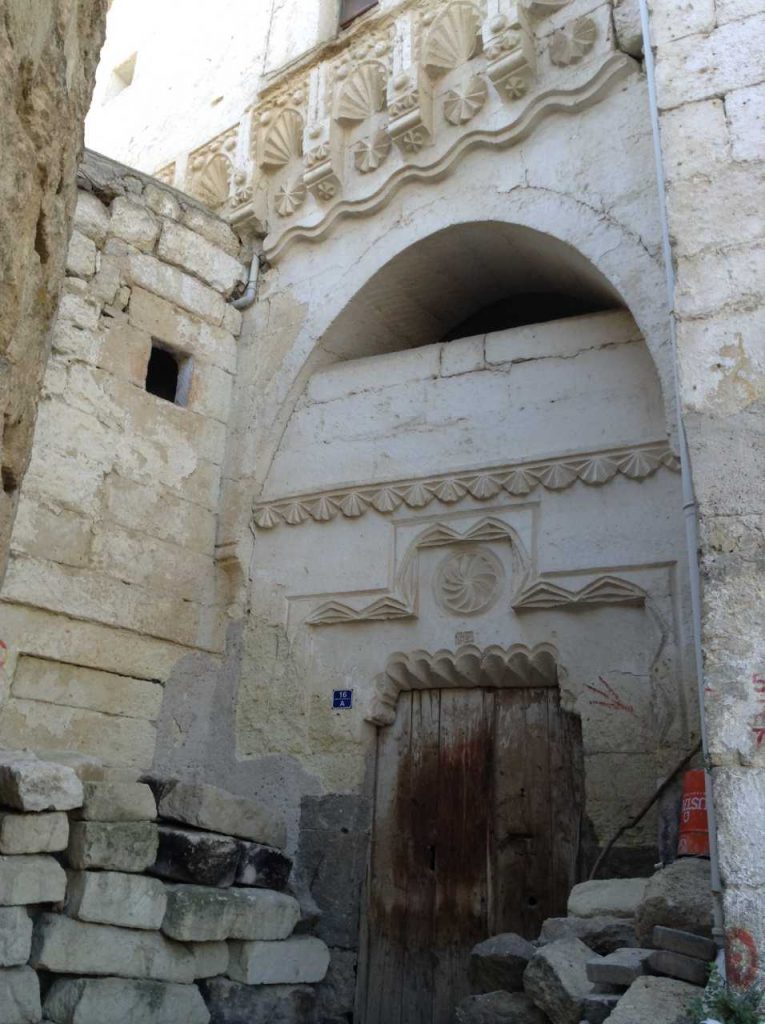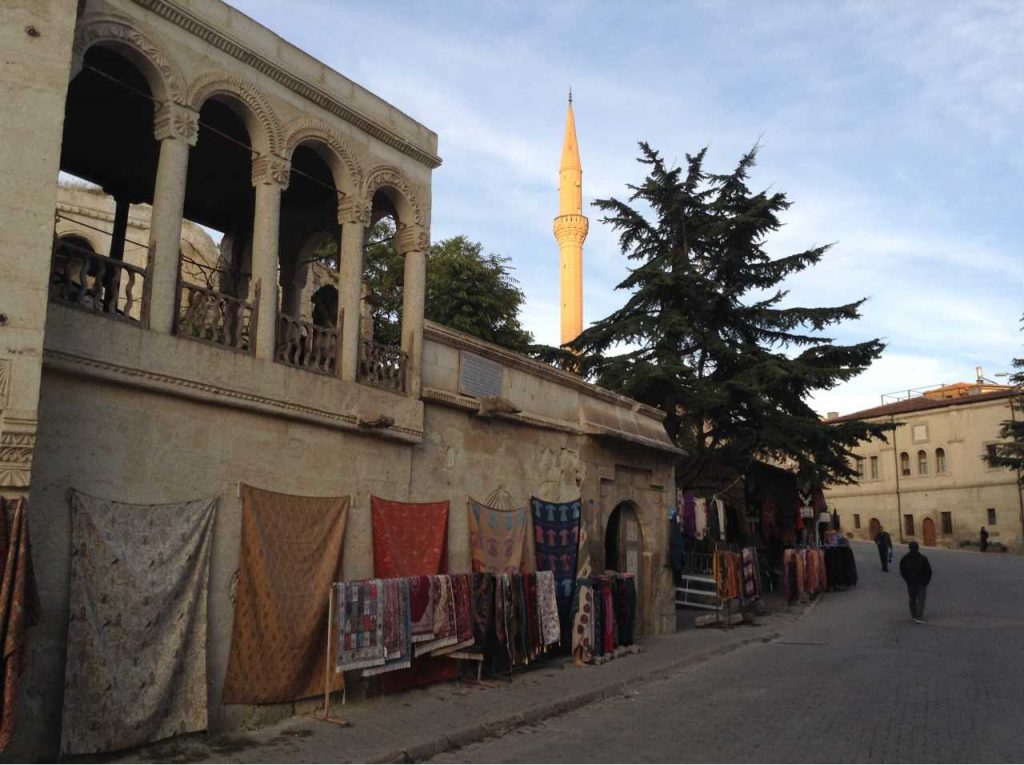In the midst of all the fairytale magic of Cappadocia, there lies an overlooked jewel embedded in the valley known as Mustafapaşa. Despite its close proximity to all the major tourist destinations, Mustafapaşa lacks the overwhelming crowds of its neighboring towns. Nestled comfortably in the valley with big sky views and a refreshing down to earth vibe, the pace here is slow and relaxed. There are all sorts of historical treasures to discover. With wide, winding streets that wrap around the entire village, it’s easy to explore on foot and what better way to see the sights? Seçkin and I unintentionally stumbled upon Mustafapaşa while driving around the outskirts of Uçhisar (third castle) one sunny November afternoon. We weren’t too surprised to find such an incredible place as this since the region is full of amazing sites. Our curiosity led us to learn more about this tucked away town.

Mustafapaşa was originally known as Sinasos (city of the sun), a Greek Orthodox village where wealthy Greek merchants and Ottomans once lived in stylish, stone mansions before the people exchange of 1923 that forced the residents of this village and many others across Turkey to migrate leaving their homes behind as the only reminder they were ever here. I can’t begin to imagine how that experience must have felt, being ripped from your roots and sent away to begin again in a foreign place. Seçkin and I parked just outside of the marvelous 17th century Church of Constantine and Helena, located right off the main road in the town square. What a great introduction to a new place, history smack in the face. To our dismay, it was closed but I was convinced there was another way in so I sneaked around the premises to see what I could find. Nope. The iron doors were locked and the angels weren’t about to take pity on a couple of curious strangers. Instead, I shifted my attention to the colorful details at the entrance of the church. The entryway is in the shape of a cross decorated with a carved, plaster relief of grape vines that weave their way around the door and a couple blue, bodiless, angel-type figures watch from above. The exterior was in pretty good shape and its likely it was restored at one point. Some of the church’s facade still retained its colors even though they are faded and have since begun to peel away as the years roll by. I tried peeking in through a window just to get a glimpse of the interior, but it was too dark to see anything. From here, we wandered along a cobblestone street and just up the road, we came upon Şakir Paşa Medrese (Shakir Pasha University) an Ottoman era structure with a stunning entryway of intricately carved stone and marble framing with a massive, ornately decorated wooden door. Today, this medrese is used as a vocational high school. Not a shabby place to get an education.

Venturing around the neighborhoods, we noticed the spectacular architecture of the town. Many of the buildings had intricate designs carved into their facades, around the windows and doorways. These once vibrant mansions now show their age, weathered by time and neglect. So many of these buildings were abandoned and are in desperate need of repairs. Their rooms are now occupied by overgrown plant life and filled with bird’s nests. Some of these old-world beauties have been renovated and restored to their fabulous selves. I was so curious about the interiors, were they just as amazing? I pictured rooms decorated with the same hand carved, ornate designs on wooden cupboards and doors. High, wooden ceilings with crystal lamps and colorful murals painted on the walls that mimicked the beauty of living in such a magnificent landscape. I listened for the footsteps of ghosts on wooden floors that creaked softly underfoot as they attempted to communicate with us or relay a secret message. Could there be a hidden doorway that led to a secret underground tunnel connecting to a cave in the heart of Gomeda Valley? Definitely a possibility. The true identity of the artisans who carved these ornate motifs has been debated. Some say they had traveled from Syria or Mardin (southeastern Turkey) since the decorative styles are similar to the ones found on the buildings in these faraway places.

We crossed paths with several street cats and dogs who took little notice of us since we had no food to offer them. Aside from university students and a few locals, we seemed to be the only ones wandering around town. Past the Cappadocia University faculty building, we saw a striking old Greek house with an impressive terrace that we learned was once the set of a popular Turkish soap opera, Asmalı Konak. Since then, it has been converted into a fancy hotel and restaurant. Intrigued, we went inside to have a look around, but were told we would have to pay a fee so we left. We were turned off by this demand since by the looks of the decor, the place seemed to be doing pretty well financially. Besides, there was so much else to see for free that we didn’t let this dampen our adventurous spirits. We continued on and discovered even more impressive architectural details around every corner. We spent time getting up close to the houses, touching their bumpy skins and trailing our hands over their carved motifs trying to figure out what those symbols meant. There was always an engraved sign or symbol to be found or a carved stone animal that had partially eroded over time. These elements added an imaginative edge and gave each building a unique character.

For the time being, Mustafapaşa remains low on the radar and is still untouched by the explosive tourism sector that has dominated much of the region. What captivated me most about Mustafapaşa was its peaceful nature and unspoiled atmosphere. I could totally live in this storybook village with its inspiring architecture and quiet streets full of endless discoveries. This is the perfect place to escape the bustling mobs of Cappadocia and relish in a place where time has stood still.
Images courtesy of the author.









